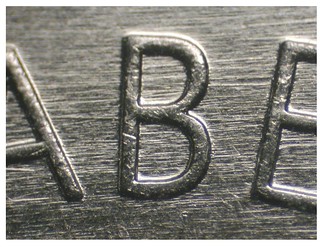
PREV ARTICLE
NEXT ARTICLE
FULL ISSUE
PREV FULL ISSUE
DIE STRIATIONS AND DIE TRAILSJohn Regitko submitted these notes in response to last week's question about unusual marks seen on a Kentucky State Quarter. -Editor 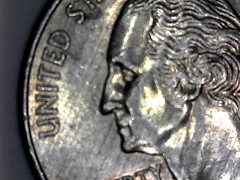 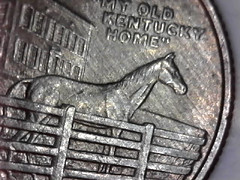 In the last E-Sylum, you mentioned the term "Planchet Striations" with reference to a 2001-P Kentucky State quarter. A planchet is generally a blank that went through the milling machine to make the blank just a bit smaller and add a high rim around the perimeter. This is also called turning the Type 1 blank into a Type 2 blank planchet. So by using the word "planchet," it implies that the striations were on the blank before it was struck. However, that does not account for the striations to be on the struck coin, since the 200-plus tons of pressure of the dies would flatten any high points on the planchet. As well, it could not be a planchet problem, since planchet defects are one-of-a-kind (just like double-strikes, off-centers, clips, etc.) and there are a number of these known. The only answer, therefore, has to involve either from the flow of metal when the planchet was struck, or it was on the die. How the metal would flow that far is beyond possibility in the split-second that a coin takes to be struck. That leaves the die as the culprit, in my opinion.
You can see lines running in one direction, the direction of the buffing. It is hardly as obvious as the U.S. quarter, so that must have been a heck of a buffing (maybe the worker was really angry that day and took it out on the die?). I am surprised that the good folks at the U.S. Mint would knowingly buff it so much and then actually install it on a minting press, however the Philadelphia Mint was churning out a lot of coins as fast as they could. Since the presses, technology and procedures are the same in both Canada and the U.S. it would make no difference if it is produced in Winnipeg or at one of the U.S. plants. Let's see if other subscribers challenge my conclusion! John Regitko Sean Moffatt offers these notes. -Editor I would like to offer some additional information on the die trails and the origin of these lines. For a long time minting "armchair minters" have decided that these lines come from the hobbing process. That is incorrect. I have been in the minting trade for 30 years. I started out in a die room making and polishing dies, and I still make and polish dies among many other things I have to do on a daily basis. As a young die polisher I put plenty of these trails on dies that I had to fix before sending the die to the press. I now train new die polishers to avoid this mistake, and how to fix it. The die trails come from inexperienced or over zealous die polishers. The direction of the trails are typically same direction on a coin and typically in random directions between coins made from another die. The hobbing process is just like coining a new coin die. The metal flow is roughly the same, but not as fast as striking a coin. The pressure generated flow lines, if any, will run radially towards the outside diameter of the die. So if these die trails came from hobbing the lines would always be going towards the outer edge of the coin. Again I point out the trail lines go in random directions between different dies. With this being said, I was a technical advisor to Will Brooks who wrote an article about a year ago for Coin World I think) stating that the die trails could not come from the hobbing process because of what I mentioned above. Although he was not quite sure where they came from die polishing was a suspect in his mind. I made a video of me polishing a perfectly flat coining die and through intentional over zealousness during the polishing imparted die trails on to the face of the die. I went a little overboard and created some rather large lines. Mr. Brooks still has the die and him and Ken Potter were going to take pictures. The video is kind of rough as I wanted to make it without pausing so no one could claim that I modified the die off camera. Below is a link to the video. I now use this video when training new die polishers as a guide of what not to do. 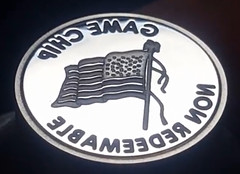 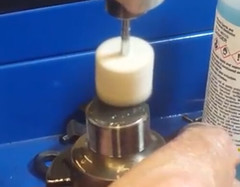 Before and During polishing  After polishing To watch the video, see: Thanks, everyone! -Editor To read the earlier E-Sylum article, see: 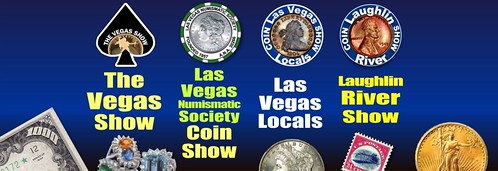 Wayne Homren, Editor The Numismatic Bibliomania Society is a non-profit organization promoting numismatic literature. See our web site at coinbooks.org. To submit items for publication in The E-Sylum, write to the Editor at this address: whomren@gmail.com To subscribe go to: https://my.binhost.com/lists/listinfo/esylum All Rights Reserved. NBS Home Page Contact the NBS webmaster 
|
